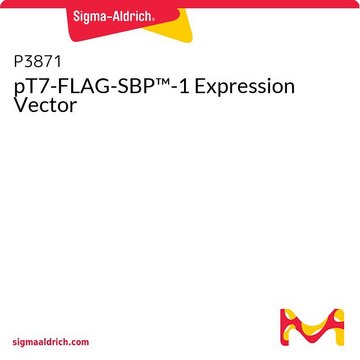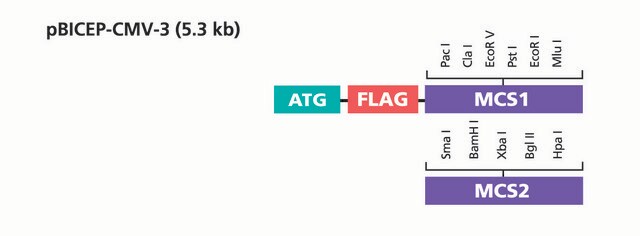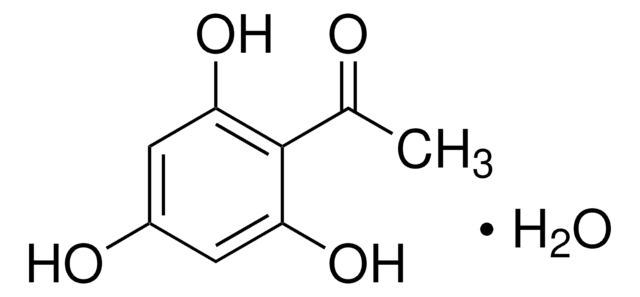Recommended Products
grade
for molecular biology
form
buffered aqueous solution
shipped in
dry ice
storage temp.
−20°C
General description
pT7-FLAG™-2 is a 4.8 kb E . coli expression vector used for cloning and cytoplasmic expression of a properly inserted open reading frame as a N-terminal Met-FLAG fusion protein containing the FLAG® epitope (DYKDDDDK). The promoter region of the very strong phage T7 promoter drives transcription of ORFFLAG fusion constructs. This vector requires the use of E. coli cells containing a source of the T7 polymerase, such as BL21(DE3)T1R cells, Catalog Number B2935.
Application
pT7-FLAG®-1 Expression Vector has been used in the cloning of ubiquitin fusion protein and connexin 43 (Cx43) C-terminal fragment.
Components
pT7-FLAG™-1 Expression Vector (P6742) is supplied as 0.5 mg/ml in 10 mM Tris-HCl (pH 8.0) with 1 mM EDTA.
pT7-FLAG™-1-BAP Control Vector (P6992) is supplied as 0.5 mg/ml in 10 mM Tris-HCl (pH 8.0) with 1 mM EDTA.
pT7-FLAG™-1-BAP Control Vector (P6992) is supplied as 0.5 mg/ml in 10 mM Tris-HCl (pH 8.0) with 1 mM EDTA.
Legal Information
FLAG is a registered trademark of Merck KGaA, Darmstadt, Germany
pT7-FLAG is a trademark of Sigma-Aldrich Co. LLC
related product
Storage Class Code
12 - Non Combustible Liquids
Choose from one of the most recent versions:
Certificates of Analysis (COA)
Lot/Batch Number
Don't see the Right Version?
If you require a particular version, you can look up a specific certificate by the Lot or Batch number.
Already Own This Product?
Find documentation for the products that you have recently purchased in the Document Library.
Chase T Archer et al.
The Journal of biological chemistry, 283(31), 21789-21798 (2008-06-03)
Destabilization of activator-DNA complexes by the proteasomal ATPases can inhibit transcription by limiting activator interaction with DNA. Modification of the activator by monoubiquitylation protects the activator from this destabilization activity. In this study, we probe the mechanism of this protective
Yo Sugawara et al.
The Journal of cell biology, 189(4), 691-700 (2010-05-12)
Botulinum neurotoxin is produced by Clostridium botulinum and forms large protein complexes through associations with nontoxic components. We recently found that hemagglutinin (HA), one of the nontoxic components, disrupts the intercellular epithelial barrier; however, the mechanism underlying this phenomenon is
Ning Kong et al.
Autophagy, 16(10), 1737-1752 (2019-12-24)
Interferon-induced BST2 (bone marrow stromal cell antigen 2) inhibits viral replication by tethering enveloped virions to the cell surface to restrict viral release and by inducing the NFKB-dependent antiviral immune response. However, the mechanism by which BST2 uses the selective
Our team of scientists has experience in all areas of research including Life Science, Material Science, Chemical Synthesis, Chromatography, Analytical and many others.
Contact Technical Service




